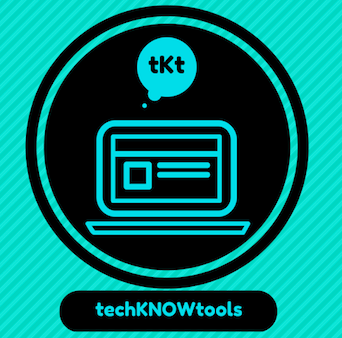There are no shortages of articles, resources, videos, and ideas found online to support our educational planning. With the vast amount of ways to create and disseminate learning materials, it is critical to appropriately share, curate, remix, and adapt educational content. In open education, it is important to understand how to attribute and identify copyright, fair use, and intellectual property.
Flickr image c/o Langwitches
In gathering resources for my courses and to encourage appropriate attribution as my students to create, this is a quick overview and definitions of copyright, fair use, the public domain, and the creative commons.
Copyright
The Basics of Copyright
[Video; 6:19 minutes]This is an introductory video in copyright law, specifically about how to share copyrighted material at work while still respecting the rights of the content creators. Will you require permission before using materials? Do you ask permission before using protected content?
This is an introductory video in copyright law, specifically about how to share copyrighted material at work while still respecting the rights of the content creators. Will you require permission before using materials? Do you ask permission before using protected content?
- Copyright law applies to all works, including print, media, and electronic mediums
- Protected: Books, magazines, online articles, songs, screens plays, choreography, art, software, work, software, podcasts, and photos
- Not Protected: Ideas, facts & data; government items
- Know the facts about copyright, not the myths
- Get permission if required (when in doubt get permission)
- Just because you found it online, & it is publicly available does not mean it is free to use
- Not sure? Just ASK! Legal counsel at your workplace or an information professional (in the College of Information) or at the UNT Library for advice.
- UNT Copyright Resources https://copyright.unt.edu/
- CLEAR Copyright Guide for Instructors http://clear.unt.edu/copyright
- Electronic Frontier Foundation: Teaching Copyright Resources
Flickr image c/o Horia Valarn
Fair Use
Fair Use from copyright.gov:
“Fair Use is a legal doctrine that promotes freedom of expression by permitting the unlicensed use of copyright-protected works in certain circumstances. Section 107 of the Copyright Act provides the statutory framework for determining whether something is a fair use and identifies certain types of uses—such as criticism, comment, news reporting, teaching, scholarship, and research—as examples of activities that may qualify as fair use.”
Specifically, there are four requirements for fair use of materials:
-
- The purpose is for nonprofit, noncommercial educational use (typical cases).
- The nature of the copyrighted work is consistent with the proposed use.
- The amount and substantial of the original work involved some small uses can be considered an infringement, that is, a small portion involves the core idea in the copyrighted work.
- The effect of using the copyrighted work is not likely to deprive the copyright holder of sales or market interest.
Public Domain
The “public domain” relates to creative materials or works that are not protected by intellectual property laws, including copyright, trademark, or patent laws. These materials are owned by the public, not an individual author, artist, or creator. Public domain materials and work may be used without obtaining any permission; however, no one is permitted to claim ownership for it. More information about the Public Domain, “Collective Works,” and when copyright expires can be found at the Copyright & Fair Use Website via Stanford University and Teaching Copyright via the EFF.
 Creative Commons
Creative Commons
Wanna Work Together? from Creative Commons on Vimeo. Creative Commons copyright licenses and tools allow for content to be shared beyond the traditional “all rights reserved” setting and decide on the best form of attribution for their work. The goal is to refine how copyright works and allows content creators to CHOOSE if they want to retain copyright while letting others copy, distribute, and make use of part of their work. You can decide what the copyright is and how others may use your photo, music, or works. Creative Commons licenses provide:
“everyone from individual creators to large companies and institutions a simple, standardized way to grant copyright permissions to their creative work. The combination of our tools and our users is a vast and growing digital commons, a pool of content that can be copied, distributed, edited, remixed, and built upon, all within the boundaries of copyright law.“
To enhance your learning, training, and/or presentation materials, you may want to find creative commons and public domain images, videos, music, or media. Certain websites, such as Flickr Creative Commons, even offer users content with specific attribution for use. There is even a Creative Commons Search to aggregate even more content to share, use and remix, including media, images, video, audio, music, photography, and web resources. Besides Flickr, there are a number of other helpful sites to locate Public Domain or Creative Commons images. Additionally, there are ways to attribute and provide CC by licenses via other online accounts including YouTube, Bandcamp, SoundCloud, Vimeo, Archive.org, and your blog or website.
Want to learn more about Creative Commons and Open Educational Resources (OERs)? Check out UNT CLEAR‘s Creative Commons Guide and the UBC’s OER Accessibility Toolkit.



I cover these same topics as an instructor of a Graphic Design Portfolio class, your post is a great reference for my students. I’ve recently come across a stock photography website, Unsplash.com, and would love for my students to utilize it as a resource. I’m concerned that I’m missing something in the EULA—is it too good to be true?!
LikeLike
That’s great! Please feel free to share with your students as well. I didn’t include Unsplash.com after reading a recent article in the Chronicle Profhacker blog that talked about their change in licensing: http://www.chronicle.com/blogs/profhacker/changes-to-unsplash/64198 I wasn’t so sure how “open” these resources were, so I did not include it, but perhaps it’s worth investigating again.
LikeLike
I had not seen that article, thank you for sharing. I will continue to look into it—was hoping to use them for an upcoming class project!
LikeLike